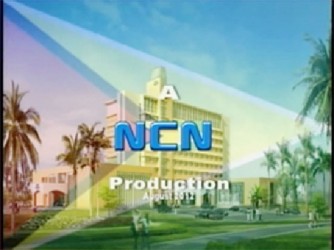By Kevin De Silva
Kevin De Silva, Guyanese, is a graduate of the University of Toronto and is currently engaged with issues related to Guyana and its diaspora.
In a 2012 debate on NCN in Guyana, Honourable Member Ashni Singh, Honourable Member Odinga Lumumba, Executive member of NICIL Mr. Winston Brassington and Captain Gerry Gouveia sat down with leader of the Alliance For Change, Khemraj Ramjattan, to discuss the building of the Marriott Hotel. The debate was one of seven in a series devoted exclusively to charges of rampant corruption on the part of the ruling PPP government.
The NCN debate ended with an image projected on screen, an artist’s rendition of a beautiful tropical Guyanese Marriott. The hotel is superimposed onto a flag of Guyana to suggest to the viewer that it’s a positive and nationalistic project intended for all Guyanese. According to Ashni Singh: “…I don’t believe anybody could seriously or credibly argue, and I don’t believe anybody has seriously or credibly argued today, that the Marriott project is not good for Guyana.” The overtone of these images and pronouncements is that opponents to the project are not simply anti-government, but anti-Guyana.

There are at least four reasons why the project is inappropriate: 1) The Marriott should be at the absolute bottom of the priority list of the present regime due to a number of emergency-like conditions. 2) The project does not improve social conditions for average Guyanese citizens even though it improves the conditions (infrastructural and experiential) for foreigners and wealthy Guyanese citizens. 3) Though the Marriott will allegedly employ up to 500 people, it cannot be used by Guyanese outside of a small milieu who have access to the state and or private and international capital. 4) The hotel is connected to a beautification process which will assist in easing the functioning and access of state officials (increasingly unlinked from their constituents) and businesspersons to quality five-star facilities at the expense of building socially focused institutions for those most in need.
According to the Feasibility Study released by NICIL, provided to the public on its own internal timeline and leisure: “The Government of Guyana, via its investment holding company, NICIL, has already injected US$19.5 M representing 1/3 of the funding for the project (US$4 M as equity for 33% and the remainder as non-interest bearing subordinate debt). The private investor will invest US$8 M for 67% of the equity and will control the Board of Directors.”
The study cites the inconvenient location of the Princess Hotel as a justification for why the project is being built at all: “The Princess Hotel is outside of the central business district and thus not an attractive option for a significant portion of the country’s business and government travelers. The balance of the hotel room supply consists of boutique hotels and bed-and-breakfast facilities.” The study also provides figures regarding the current occupancy rates of both the Pegasus and the Princess Hotel (roughly 63% and 52% respectively). Neither figure is particularly high nor does either figure suggest that capacity has been even remotely reached in Guyana with respect to accommodations in the hospitality sector, rendering the claim of creating surplus space for a burgeoning tourist sector less plausible and therefore much weaker.

There is also the awkward argument that the Marriott’s construction will attract international investors or will persuade them to view Guyana with new eyes, a position that is somewhat spurious and definitely misguided. This is so because if any of the above institutions/issues were even partially remedied, Guyana would have a better economic outlook in attracting international investors. It also would have in its possession priceless social and economic capital held onto by Guyanese citizens themselves, irrespective of whether international capital chose to set up shop or not. Lastly the suggestion that “Trinidad and Jamaica have done something similar to what we are doing therefore it is good” is nonsensical and has no bearing on Guyana’s current condition and level in the international economy.
The Feasibility Study notes the degree to which the Marriott entertainment complex is intended to be a project that is in many ways segregated from the rest of the country. If the artist’s rendition of its glass facades and lobby physically choreographing the bodies/eyes of visitors towards the expanse of the Atlantic (and away from the filth and squalor of Georgetown) was not enough of an indication, the study outlines the physical boundaries that will create an antiseptic, free floating cosmopolitan space: “We have assumed that the casino will not require a footprint or view of waterfront, as these facilities are virtually enclosed with the goal of seclusion in mind.” Engaging with Georgetown is not particularly recommended in another passage: “Having numerous options for dining at the hotel will ultimately enhance the guest experience and should encourage hotel guests to eat off-site less frequently.” The study also notes the more functional aspects of the building: “This space should be adequate to simultaneously host multiple events and should be acceptable based on the market expectations for local, regional, and international public and private social functions, events, business meetings, and conferences.”
On and on, the study highlights ballrooms and the swimming pool, conference rooms and fine dining. There is the casino and there are glass facades and marbled desks for guest services, intended spas and salons, fitness centres to stay in shape and ice machines so individuals can deal with Guyanese heat. A promenade and a nightclub for social activity.
No Guyanese citizen built the complex, no Guyanese learned from the building of it, with one of the staunchest supporters of the endeavour, Captain Gerry Gouveia, noting the unfortunate fact that labour wasn’t better off as a result of the project. Specifically, no Guyanese worker ever shadowed a Chinese contract worker during their stay, a move which would have at least allowed for basic skill upgrading and/or a rudimentary working knowledge of construction and project development. With rates ranging from $220 to $850 USD per night, and in a country where the monthly minimum wage is $35,000 GYD or $170.15 USD, few if any Guyanese can afford an overnight sanctuary in the facilities and would in all likelihood feel like an alien in their own country were they able to scrounge and somehow treat themselves.
Surviving off of the architectural feats of the British in its heyday 80 to 90 years ago, and in certain cases the irrigation techniques of Dutch colonials even earlier than that, the Guyanese government has done surprisingly little with regards to formulating a coherent developmental model as well as employing architectural alternatives for the difficult climate and geography of coastal South America.
Citizens on the street are subjected to constant bombardments of information, jarring immediacy, split second decision making, noise, smells, heat, brutality and in certain cases abuse which goes undocumented even when not formally criminal.
The skeletal remains of colonial planning are often the only barriers that undergird life on the street and which organize traffic and the flow and movement of people. The decaying conditions degrade a collective unconscious. Given these dulling colonial coordinates and the government’s continued negligence in its inability to clean up its own streets, it’s in many respects extremely difficult not to read the Marriott project as revealing an inferiority complex on the part of the current regime along with a simultaneous sense of entitlement in its right to spend public monies the way it wants without recourse.
The Marriott should give pause to PPP stalwarts of the Jagan days. Though employment of roughly 500 people is frequently mentioned publicly, the Feasibility Study concludes with ten reasons as to why the project is a viable one for Guyana and not one of those reasons includes the category of ‘employment’ as a catalyzing factor.
The most unfortunate and symptomatic aspect of the Marriott project is that it can give a glossy image to Guyana without having to do the work of actually making Guyana functional and beautiful, the real and almost primordial and existential longing of not only those Guyanese suffering at home currently, but members of the diaspora.
The project is intended to be expanded as well, described in the following way: “Considerable space for future expansion…can accrue to the project company; e.g. luxury condominiums, expansion of the entertainment complex, shopping space (which will require parking in ground level and a parking garage)” etc.
Labelling opposition members anti-nationalistic is done because a call to cap the excesses of spending in an emergency situation is of course anti-Guyana, not anti-regime.
There is a dramatic and absurd push to make Guyana superficially and tangentially similar in likeness to other Caribbean states (oft cited Jamaica, Trinidad and Barbados for example) without getting right the basics and fundamentals of development and developmentalism, all while sloganeering using the ideology of development. The social, aesthetic and architectural result so far is not something beautiful or rational but something hideous: spots of mascara for certain zones where the wealthy few congregate, not enhancing the prospects of Guyanese but the prestige, comfort and status associated with offices of the state and powerful players in Guyana linked to domestic and foreign capital. Increased prestige and status for members of the Guyanese government and the business community, especially as hosts to foreign multinationals and delegations from other nation-states who they are attempting to impress does not entail development for Guyana at large. It does, however, entail development for them.





